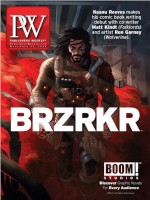The detail that has most captured industry members’ attention in the New York Times report that HarperCollins and Penguin Random House are the favorites to acquire Simon & Schuster is the news that the purchase price is expected to be at least $1.7 billion. That figure is at the top end of original estimates of $1.2 billion–$1.7 billion for the price of the country’s third-largest trade publisher.
The sale of S&S will be the largest acquisition in North American trade publishing since HarperCollins bought Harlequin in 2014. It will also be one of the few recent transactions in which the revenue of the target company is public and the purchase price may also become public.
Based on the financial figures available, ViacomCBS picked a good time to sell S&S. Its revenue in 2019 was $814 million, and adjusted operating income before appreciation and amortization (OIBDA) was $143 million. Through the first nine months of 2020, revenue and earnings were higher than the comparable period in 2019, and S&S could finish 2020 with sales of about $875 million and OIBDA of $150 million. Based on those projections, the winning bidder would be paying a multiple of slightly more than two times revenue or 12 times earnings if the price is indeed $1.7 billion. In recent years, ballpark valuations for trade companies have been 1–1.5 times sales, with profitability also a factor in arriving at a final price.
In 2014, HC paid C$455 million for Harlequin, which had revenue C$398 million in 2013 (giving it a sale multiple of 0.9 times revenue) and operating income of C$52 million (11 times earnings). S&S is considered more valuable than Harlequin for many reasons, among them the depth of its backlist, its strong earnings performance in recent years, and, perhaps most importantly, the fact that it is likely the last of the Big Five trade publishers that will be up for sale for the foreseeable future. For companies that believe in trade book publishing, there will never be a better opportunity to add scale and gain more operating efficiencies.
A successful bid by HC would draw it closer to PRH in terms of sales in the U.S. Currently, PRH’s U.S. sales are about $2.2 billion, while HC’s U.S. sales are estimated at approximately $1.1 billion. Adding S&S would put HC’s U.S. sales close to $2 billion. If PRH is the winning bidder, it would have an even more dominant position in the American market. Buying S&S could also give an overseas publisher an immediate large presence in the U.S., and there are reports that at least one foreign publisher—thought to be Vivendi—is still in the running.
The high valuation for S&S is good news for Houghton Mifflin Harcourt, which put its trade division on the market at the beginning of November: the loser of the S&S contest could become the favorite to buy HMH trade. The division would be much less costly than S&S; its revenue in 2019 was $180 million, and its earnings (adjusted EBITDA) was about $15 million. The company may finish 2020 with results slightly ahead of 2019, giving it an outside chance of drawing a purchase price of about $380 million. But HMH trade has always been less profitable than S&S, and even at 12 times profits that multiple would put a sale price at roughly $220 million. The final price is likely to fall somewhere between $220 million and $380 million.
The lower price could interest buyers other than those who have been considering S&S. The Times said bids for S&S are due before Thanksgiving, and a winner could be announced shortly thereafter. When that deal is closed, and with HMH trade in play and a Covid-19 vaccine on the way, some in the publishing M&A field believe 2021 could see a flurry of activity after a slow 2020.



 Volume 267
Issue 47
11/23/2020
Volume 267
Issue 47
11/23/2020





